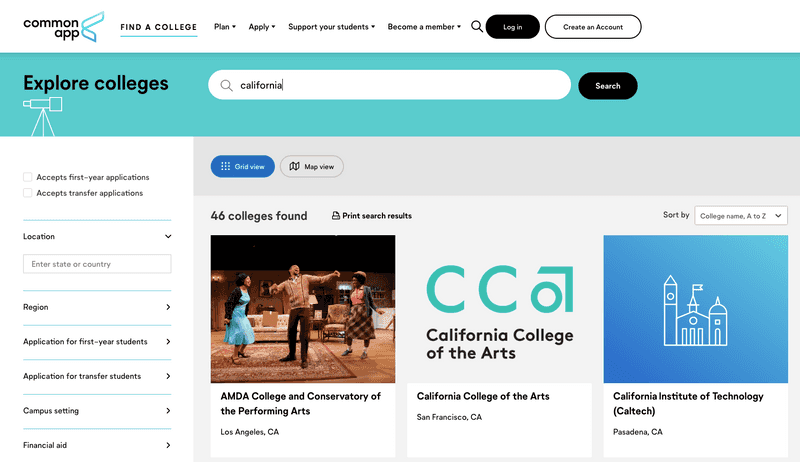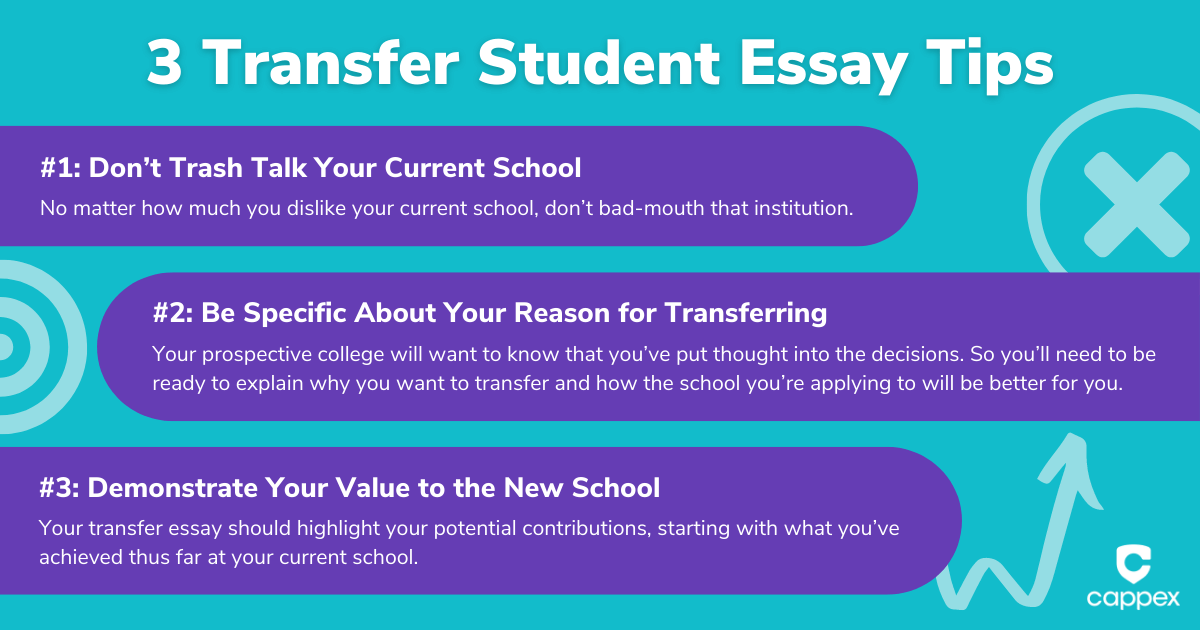Key Takeaways
Transfer essays should reflect your academic goals and how the new school aligns with them.
Start your essay with a clear and engaging opening that sets the tone and introduces your main points.
Focus on specific reasons for transferring, such as seeking academic opportunities not available at your current institution.
Avoid negative comments about your current school and focus on the positive aspects of the potential transfer.
Be authentic and personalize your essay for each school, showcasing how you will contribute to their community.
Why Write a Transfer Essay?
Imagine you’re on a journey, and you’ve hit a fork in the road. The path you’re on is fine, but there’s another that could take you to places you’ve only dreamed of. That’s what a transfer essay is all about – showing colleges why you’re ready to take a new path that better suits your aspirations. It’s your chance to tell your story and to explain why their school is the next chapter in your educational journey.
Understanding College Expectations
Colleges are looking for transfer students who are not just looking for a change of scenery, but who have a clear purpose and plan. They want to see that you’ve done your homework and understand what makes their institution a better fit for you. It’s not just about what you’re moving away from, but what you’re moving towards.
The Importance of a Good Fit
Let’s face it, not every shoe fits, and not every college is right for every student. A good fit academically and culturally is essential for your success and happiness. That’s why it’s crucial to articulate in your essay how transferring to a new college aligns with your personal and academic goals.

“Stellar Transfer Personal Statement …” from www.koodooslearning.com and used with no modifications.
What Colleges Want to See in a Transfer Essay
Academic Goals and Objectives
First things first, colleges want to understand your academic ambitions. What drives you? What are you passionate about? Use your essay to paint a picture of your academic journey and where you hope it will lead. It’s not just about what you want to study, but why and how the new school will help you get there.
For instance, if you’re aiming to switch from a large university to a small liberal arts college, discuss how the intimate class sizes and focus on undergraduate research will help you thrive academically. Learn more about the Common App for transfer students to streamline your application process.
Personal Growth and Development
But it’s not all about academics. Personal growth is a huge part of the college experience. Share your story of personal development and how a transfer aligns with the person you’re becoming. Maybe your current school has shaped you in significant ways, but now you’re ready for a new environment that offers different opportunities for growth.
Specific Reasons for Transferring
Now, get to the heart of the matter. Why do you want to transfer? Be specific. Are there unique programs, clubs, or research opportunities at the new school that you can’t find anywhere else? Mention these. But remember, it’s not enough to say a program is excellent – you need to connect it to your goals and interests.
For example:
“I am eager to join the environmental research team at XYZ University, which aligns perfectly with my goal of developing sustainable farming practices.”
And then:
Detail how this program is unique to the school and how it complements your career aspirations.
Discuss how the resources and faculty expertise at the new school will support your academic objectives.
Explain how the change will provide you with the environment you need to flourish.
Alignment with the New School’s Offerings
Finally, show that you’ve done your research. How does the school’s curriculum, culture, or community resonate with your values and goals? Maybe they have a leading-edge lab, a particular teaching philosophy, or a community service program that’s right up your alley. Let them know that you see yourself there and why.
Remember, transferring is about finding a place where you can shine as a transfer student. It’s a step towards becoming the person you want to be, and your essay is your chance to show colleges just that.
How to Start Your Transfer Essay
Starting your transfer essay can feel like a daunting task. It’s the first impression you’ll make on the admissions committee, and it sets the stage for everything to come. But don’t fret! Think of it as the opening scene of your favorite movie, where you have the chance to draw the audience in and give them a glimpse of the adventure that awaits. For a smooth start, consider using the Common App for transfer students as a structured guide for your essay.
So, take a deep breath and begin with a bang! Start with a personal anecdote, a thought-provoking question, or a bold statement that reflects your excitement and readiness for this new chapter. This is your story, and you’re the protagonist who’s about to embark on an epic quest for knowledge and growth.
Crafting a Compelling Opening
A compelling opening is like a key that unlocks the reader’s interest. It should be a snapshot of your journey, full of color and life, that invites the reader to step into your shoes. Maybe it’s the moment you realized your current path wasn’t leading you where you wanted to go, or an experience that sparked your desire for change. Whatever it is, make it memorable.
Setting the Tone
The tone of your essay is your voice. It conveys your personality, your passion, and your perspective. So, let it be authentic and positive. Your tone should reflect not just who you are, but who you aspire to be as a member of the new college community. It’s about striking a balance between confidence and humility, enthusiasm and thoughtfulness.
Introducing Your Key Points
After setting the scene, it’s time to lay out the roadmap for your essay. Introduce the key points you’ll cover, like the reasons for your transfer, the goals you aim to achieve, and the fit between you and the new school. Think of this as giving the reader a sneak peek of the journey ahead, leaving them eager to read on and learn more.
What to Write for Why You Want to Transfer
When you’re explaining why you want to transfer, it’s crucial to be clear and specific. This is the core of your essay, where you justify your decision and share your vision for the future. You’re not just looking for a new school; you’re looking for a new opportunity to thrive and achieve your dreams.
Highlighting Academic Motivations
Your academic motivations are the engine driving your desire to transfer. Perhaps your current institution doesn’t offer the major you’ve fallen in love with, or maybe there’s a professor at the new school whose work aligns perfectly with your academic interests. Whatever the reason, make sure it shines through.
Identifying Gaps at Your Current School
Programs or courses not offered that are crucial for your field of study
Lack of research opportunities or facilities
Desire for a more challenging or diverse academic environment
It’s not about criticizing your current school, but rather about identifying what’s missing for you personally. Articulate these gaps thoughtfully, focusing on your academic journey and how the new school fills those gaps.
For example:
“Although my current college has provided a solid foundation in environmental studies, I am seeking a program with a stronger focus on marine conservation, which is my passion and the centerpiece of Coastal University’s environmental science department.”
By highlighting specific programs or characteristics of the new school, you’re not only showing that you’ve done your research, but also that you’re committed to your academic pursuits.
Connecting with the New School’s Programs
Once you’ve identified the gaps, the next step is to connect the dots between your goals and what the new school offers. Discuss how the programs, the faculty, and the community at the new institution align with your academic and personal growth plans. Show them that you’re not just leaving a school, but moving towards a future that’s waiting for you at their institution.
Discussing Long-term Goals and Aspirations
Your long-term goals and aspirations give depth to your reasons for transferring. They show that you’re thinking ahead and that you see the new school as a stepping stone to your future success. Share your vision for the future and how the education and experiences you’ll gain at the new school will help you get there.
For instance:
“Joining XYZ University’s innovative entrepreneurship program is a critical step towards my dream of launching a tech startup that bridges the gap between education and virtual reality technology.”
This not only demonstrates ambition but also shows how the new school is integral to achieving your long-term objectives. For more insights on crafting your narrative, consider exploring these successful college transfer essay examples.
What NOT to Write in Your Transfer Essay
While it’s important to be honest in your transfer essay, there are certain things you should steer clear of. Remember, this essay is about moving forward, not looking back in anger or frustration. It’s about finding a better fit, not settling scores. For more guidance on what to include in your essay, check out our tips on supporting teens through the college admissions process.
Avoid Negative Comments About Current School
Don’t blame your current institution for not meeting your expectations.
Refrain from making disparaging remarks about professors or programs.
Focus on the positive aspects of what you’re seeking, rather than the negatives of what you’re leaving behind.
Instead, frame your reasons for transferring in a positive light. It’s not that your current school is bad; it’s that the new school offers something even better for your specific needs and goals. For more guidance on what to include in your transfer application, consider reviewing the Common App for transfer students.
For example:
“While I have grown as a student and individual at my current college, I am excited about the prospect of joining a community at XYZ University that shares my dedication to sustainable innovation.”
This approach shows respect for your current school while emphasizing the pull of the new opportunity.
Refrain from Personal Grievances
Personal grievances or complaints about your current situation can come off as unprofessional and could raise red flags for admissions committees. Instead, focus on the constructive aspects of your transfer. Discuss the new opportunities and challenges you’re seeking and how they relate to your academic and personal growth.
Keep it positive, forward-looking, and centered on your future goals. By doing so, you’ll present yourself as a proactive and motivated student who’s ready to embrace new opportunities with open arms.
Steer Clear of Vague Statements
Being vague is like drawing a map without any landmarks—it doesn’t guide the reader anywhere. In your essay, avoid generalizations and clichés. Be specific about your experiences and how they tie into your decision to transfer. Concrete details will make your story more credible and compelling.
Don’t Focus on Non-Academic Reasons
While it’s okay to mention social or extracurricular factors that contribute to your decision, don’t let them overshadow your academic reasons. Admissions committees are primarily interested in how the transfer will benefit your educational journey, so keep the focus there.
Additional Tips for a Strong Transfer Essay
Now, let’s look at some additional tips to make your transfer essay stand out. These pointers can be the difference between an essay that’s merely good and one that pops off the page, grabs the admissions officers by the lapels, and says, “I’m your next success story.” For a more detailed guide on avoiding common pitfalls, check out our article on 5 common app mistakes to avoid to ensure a flawless process.
Proofreading for Clarity and Grammar
Proofreading isn’t just about hunting down typos—it’s about polishing your essay until it shines. Read your essay out loud, and you’ll be amazed at what you catch. Clarity and grammar are the nuts and bolts that hold your essay together, so give them the attention they deserve.
Seeking Feedback from Mentors
Feedback is gold. Share your essay with mentors, teachers, or friends who know you well and can provide constructive criticism. They can offer insights you might have missed and suggest improvements to help your essay resonate with its readers.
Personalizing the Essay for Each School
One size does not fit all. Tailor your essay for each application to reflect how you connect with that particular school’s values, programs, and community. Show them that you’re not just looking for any school—you’re looking for this school.
Here’s the thing: while the core of your essay might remain the same, the details should change. Mention specific courses, professors, or initiatives at the school that excite you. Make it clear that you’ve done your homework and are committed to joining their academic family.
For example:
“I am particularly drawn to XYZ University because of its pioneering Leadership and Social Change program, which I believe will be instrumental in helping me achieve my goal of working in non-profit management.”
Frequently Asked Questions (FAQ)
1. How long should a transfer essay be?
Most transfer essays are between 500-700 words. It’s enough space to tell your story without wandering off into unnecessary details. Stick to the point, be concise, and make every word count.
2. Can I reuse parts of my previous essays?
Yes, but with caution. If a part of your previous essay is relevant and reflects your current goals and reasons for transferring, you can adapt it. Just make sure it fits seamlessly into your new essay and aligns with the specific narrative you’re creating.
3. Should I mention unsuccessful applications?
It’s not necessary to mention previous unsuccessful applications. Focus on the present and future, not the past. Your essay should highlight why you’re a great fit for the new school, not dwell on past experiences. For more advice on crafting your application, consider reading about freshman direct vs. transfer applications.
4. Do I need to explain my grades?
If there’s a significant discrepancy in your grades, or a particular semester that doesn’t reflect your overall academic ability, it may be worth addressing briefly. Provide context, but don’t make excuses. Instead, focus on how you’ve grown from the experience.
5. How soon should I start writing my transfer essay?
Start early—give yourself plenty of time to brainstorm, write, and revise. A rushed essay is easy to spot and rarely makes a strong impression. Begin at least a few months before your application deadline to ensure you can produce your best work.




